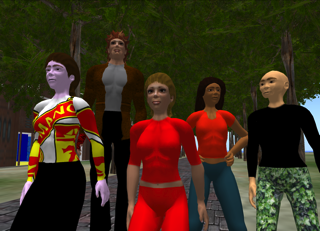
New paper: Agent-based modeling for community resource management: Acequia-based agriculture
This system of the physical ditches and the maintaining organization together is known as an acequia, and the landowners who maintain it are called Parciantes. Acequias are interesting to researchers because of the developed common property regimes they require to function. The water carried by the ditches is a shared resource, and the complex management system of the acequia has evolved to avoid Hardin’s tragedy of the commons with regard to natural resources in the sense that it prevents the resource from being overused or under-maintained to the detriment of everyone. Ostrom has extensively studied the process of sharing such resources, investigating the structures set in place to preserve them. In ‘‘Governing the Commons’’, her book on common pool resources and human–ecosystem interactions, she suggests a set of characteristics that define stable communal social mechanisms. These characteristics include the presence of environment-appropriate rules governing the use of collective goods and the efficacy of individuals in the system.
Below is the abstract from the paper:
Water management is a major concern across the world. From northern China to the Middle East to Africa to the United States, growing populations can stress local water resources as they demand more water for both direct consumption and agriculture. Irrigation based agriculture draws especially heavily on these resources and usually cannot survive without them; however, irrigation systems must be maintained, a task individual agriculturalists cannot bear alone. We have constructed an agent-based model to investigate the significant interaction and cumulative impact of the physical water system, local social and institutional structures which regulate water use, and the real estate market on the sustainability of traditional farming as a lifestyle in the northern New Mexico area. The regional term for the coupled social organization and physical system of irrigation is ‘‘acequias’’. The results of the model show that depending on the future patterns of weather and government regulations, acequia-based farming may continue at near current rates, shrink significantly but continue to exist, or disappear altogether.
Below is a movie are a few sample model runs showing how different scenarios play out, specifically with respect to land-use change.
Full reference:
Continue reading »Wise, S. and Crooks, A. T. (2012), Agent Based Modelling and GIS for Community Resource Management: Acequia-based Agriculture, Computers, Environment and Urban Systems. Doi http://dx.doi.org/10.1016/j.compenvurbsys.2012.08.004.










